Is the Nvidia GeForce RTX 4080 worth buying for creatives?
The Nvidia RTX 4080 isn’t just for gamers
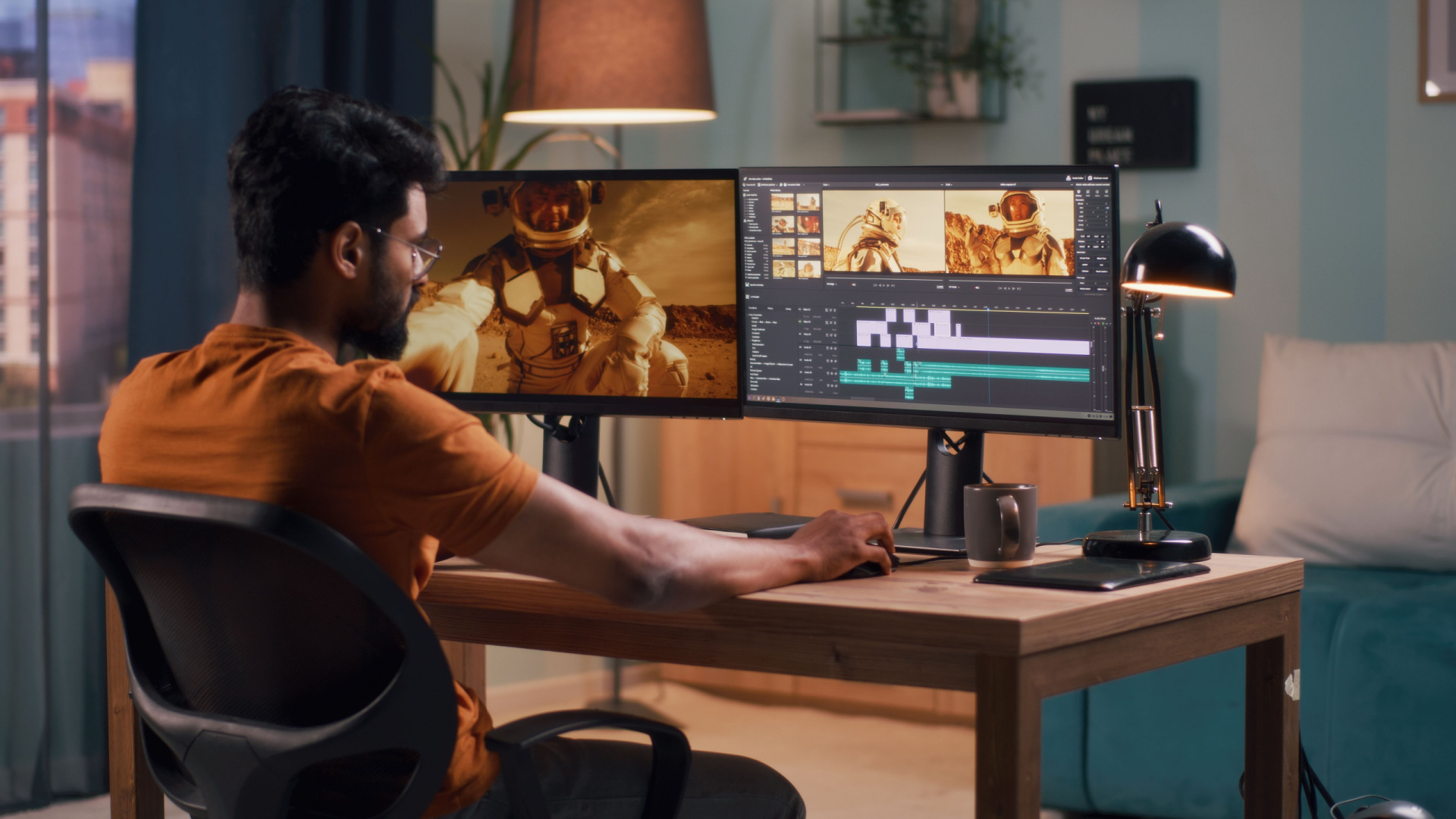
The Nvidia GeForce RTX 4080 has now launched, and like other GeForce-branded GPUs, it’s aimed primarily at gamers.
However, because of the raw power on offer, along with Nvidia’s Studio drivers that come with features and tweaks to improve performance with creative applications, this is a graphics card that may be of interest to professionals looking for the best graphics card for their needs.
While we concentrated on gaming performance in our Nvidia RTX 4080 review, here we’ll look at if it’s worth investing in if you’re a content creator.

Better value for money?
In our review of the RTX 4080, we noted that the new GPU offers pretty poor value for money for gamers. Part of this is because, despite its undeniable power, its launch price of $1,199 (£1,269, around AU$1,740) is extremely high for a gaming GPU. In fact, it’s a whopping 71% more expensive than the RTX 3080 GPU it’s supposed to be replacing.
This price actually puts it on par with the RTX 3080 Ti – a high-end GPU that we’ve previously looked at from both a gaming and creative angle.
Perhaps the biggest issue facing the RTX 4080 is its bigger sibling: the RTX 4090. At $1,599 in the US (about £1,359/AU$2,300), the RTX 4090 is more expensive, but not by a huge amount. In fact, there are some third-party RTX 4080 models that sell for more than the Founders Edition RTX 4090.
This closeness in price introduces a dilemma; while prices are close, performance isn’t. So, if you’re looking to spend a lot of money on a GPU, saving up a bit longer for the RTX 4090 may end up being worthwhile.
Sign up to the TechRadar Pro newsletter to get all the top news, opinion, features and guidance your business needs to succeed!
However, it’s also worth pointing out that there are rumors swirling that Nvidia could drop the price of the RTX 4080 in early 2023. An early price cut so soon after launch would normally not be even remotely likely, but the rumor suggests that RTX 4080 sales haven’t been stellar – and a price cut could change that.
There’s also the fact that the RTX 4070 Ti is rumored to arrive soon – and it could just be a rebadged RTX 4080 12GB (a weaker version of the 4080 that Nvidia ended up ‘unlaunching’ after a vocal outcry. Rumors suggest the RTX 4070 Ti will launch at a cheaper price than it was advertised when it was the RTX 4080 12GB, and to justify that, Nvidia may lower the price of the regular RTX 4080.
This seems a bit like wishful thinking, but if you can hold on until CES 2023 to see what Nvidia has planned, you may be able to get the RTX 4080 at a lower price – making it even better value for digital creatives – especially when compared to the high prices of professional-grade GPUs.

Specifications
As you’d probably expect, the RTX 4080 comes with some of Nvidia’s most cutting-edge tech, including stuff found on the more expensive 4090 as well. It comes with 9,728 CUDA Cores for rasterized graphics, plus 304 fourth-generation Tensor Cores for AI and DLSS.
The memory has been boosted to 16GB of GDDR6X which makes the RTX 4080 a powerful performer when it comes to heavy-duty creative tasks, such as rendering complex 3D scenes or editing ultra-high-resolution video.
According to Nvidia, the RTX 4080 offers twice the performance of the RTX 3080 Ti for the same launch price and using 10% less power. That power consumption saving is going to add up for people planning on using their PCs for sustained high-intensity workloads.
Yeah, but how does it actually perform?
In our own benchmarks, we were pleasantly surprised to see the RTX 4080 broadly live up to Nvidia’s claims when using creative tools.
Blender is an incredibly popular 3D render engine and modeling tool, and it also comes with a host of benchmarks. In the Blender 3.3.0 Monster benchmark, the RTX 4080 scored 4,812, almost twice the score of the RTX 3080 Ti’s 2,747. Impressively, it also handily beats both the RTX 3090 and RTX 3090 Ti – both flagship models that went on sale for a lot more. In the same test, for example, the RTX 3090 Ti scored 3,077.
It was a similar story with the Blender Junkshop results, and while the RTX 4080 didn’t quite score twice the amount of the RTX 3080 Ti, at 2,238 vs 1,559, it still provided a hefty performance boost.

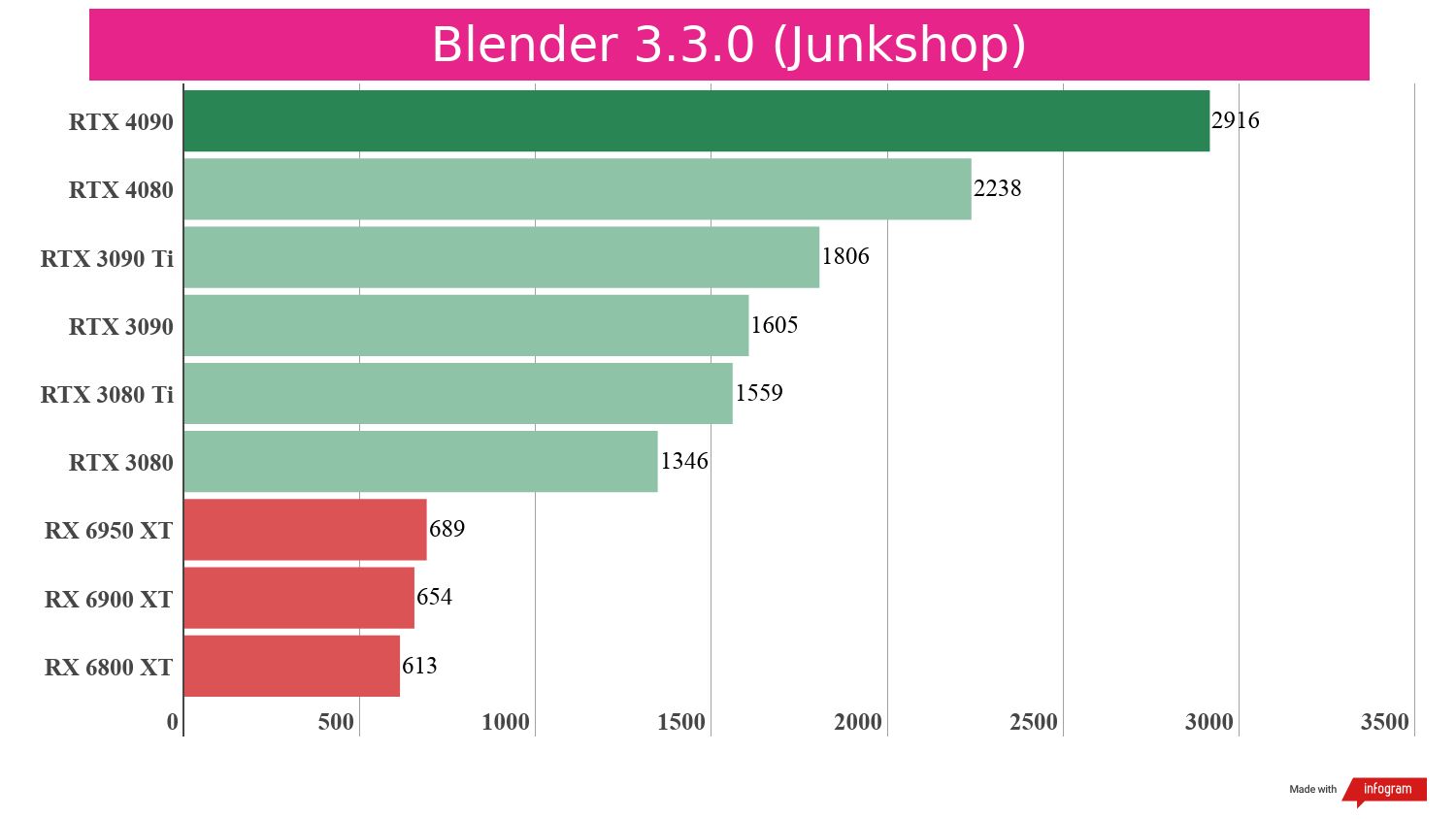
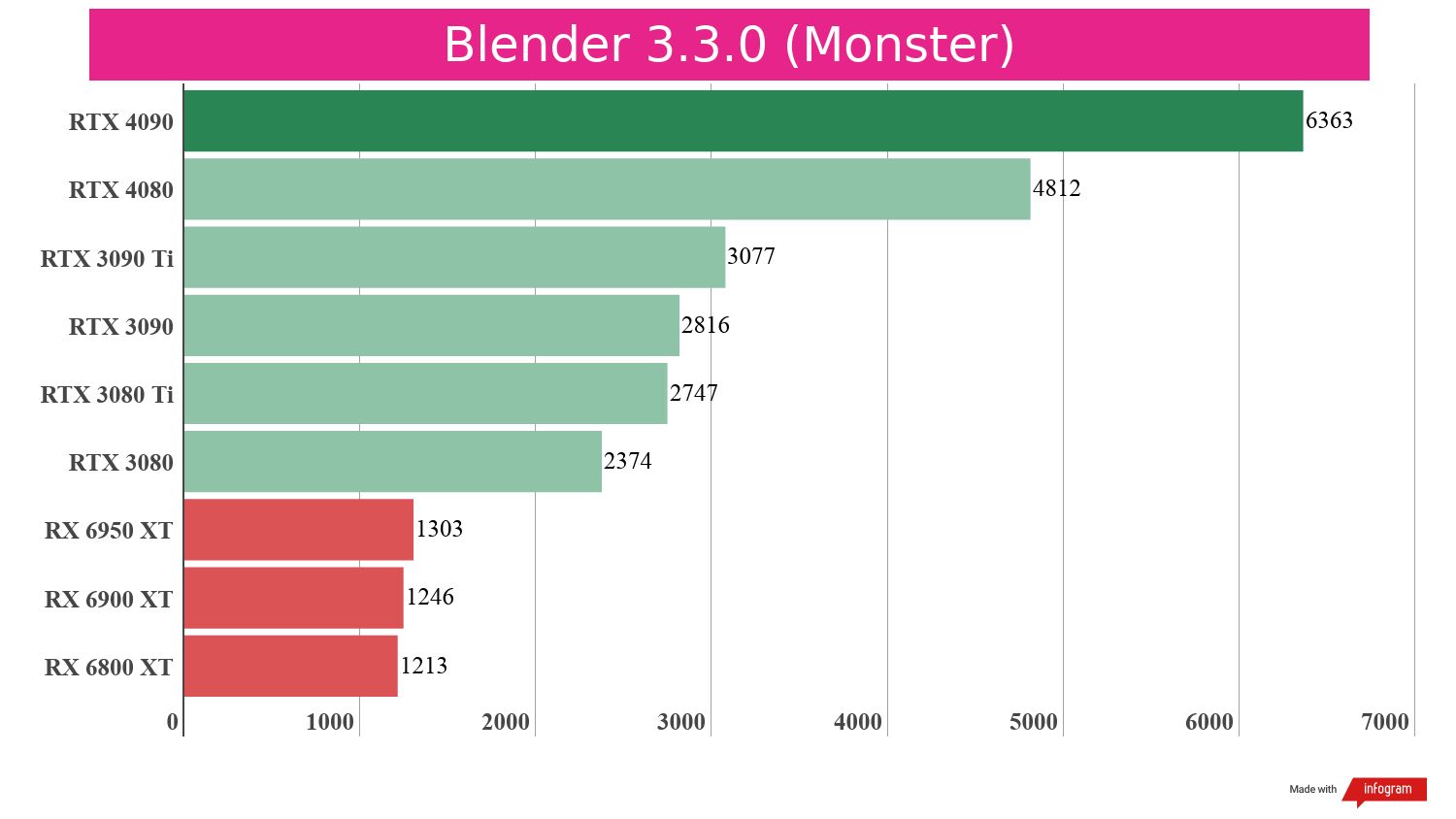
In fact, in all of our Blender benchmarks, the RTX 4080 came out well on top – only being beaten by the RTX 4090.
This means for 3D artists and creatives, if money is no object, the RTX 4080 is currently the second-best GPU you can buy right now.
However, if money is a consideration, the RTX 4080 is going to be a better investment than the 4090 – especially if a price cut is coming.
We also ran the PugetBench benchmark for Adobe Premiere Pro. Premiere Pro is a popular tool for video editors and content creators, and the benchmark checks to see how well hardware can run various tasks.
In the tests, the RTX 4080 unsurprisingly scored quite a bit higher than the RTX 3090 Ti, 3090, and 3080 Ti. What was a surprise, however, was that the gap drastically narrowed in our tests with the RTX 4090. The more expensive GPU still came out on top, but with a score of 967 compared to the RTX 4080’s 946, it’s incredibly close – to the point where you’d not notice the difference.
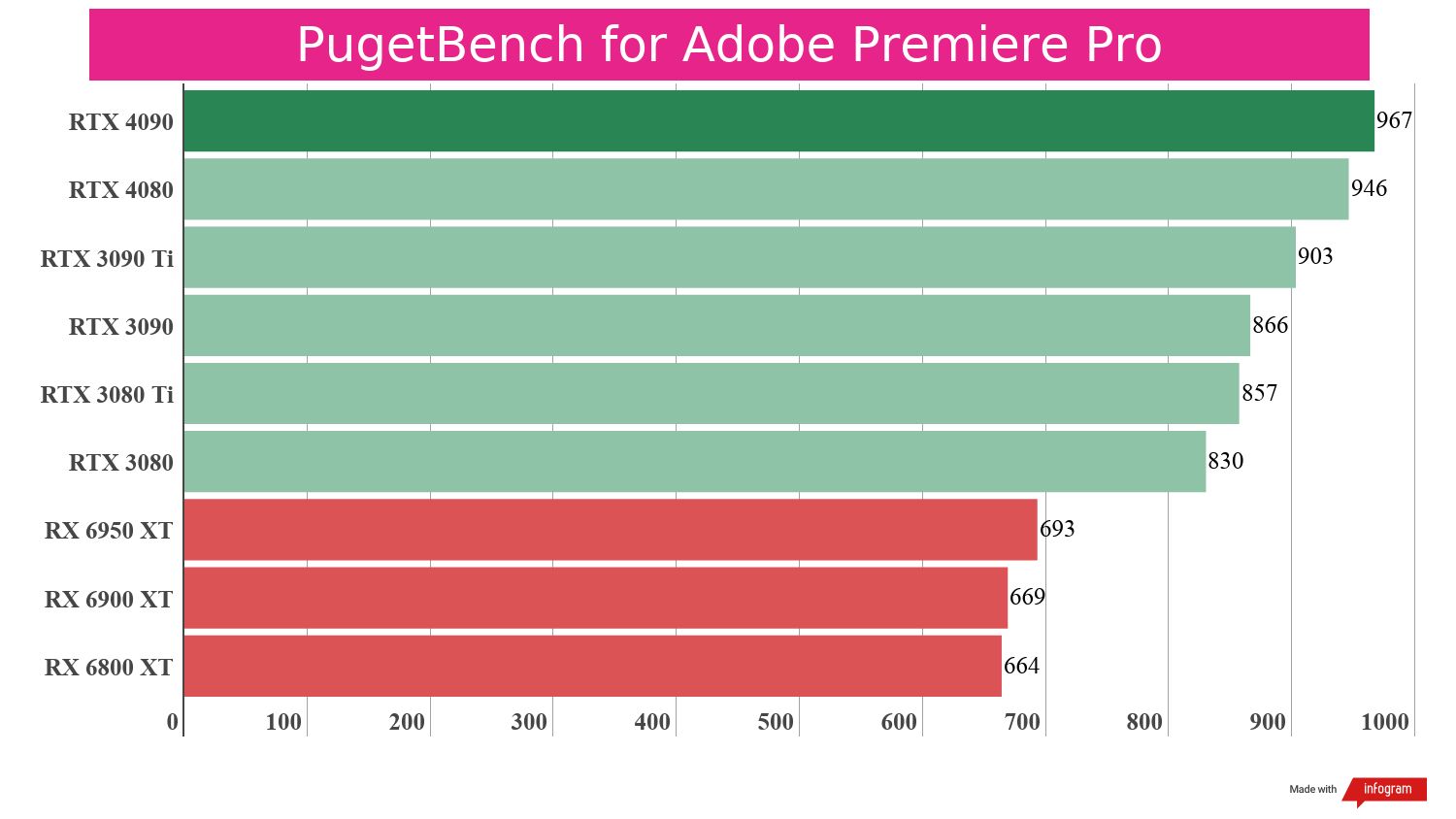
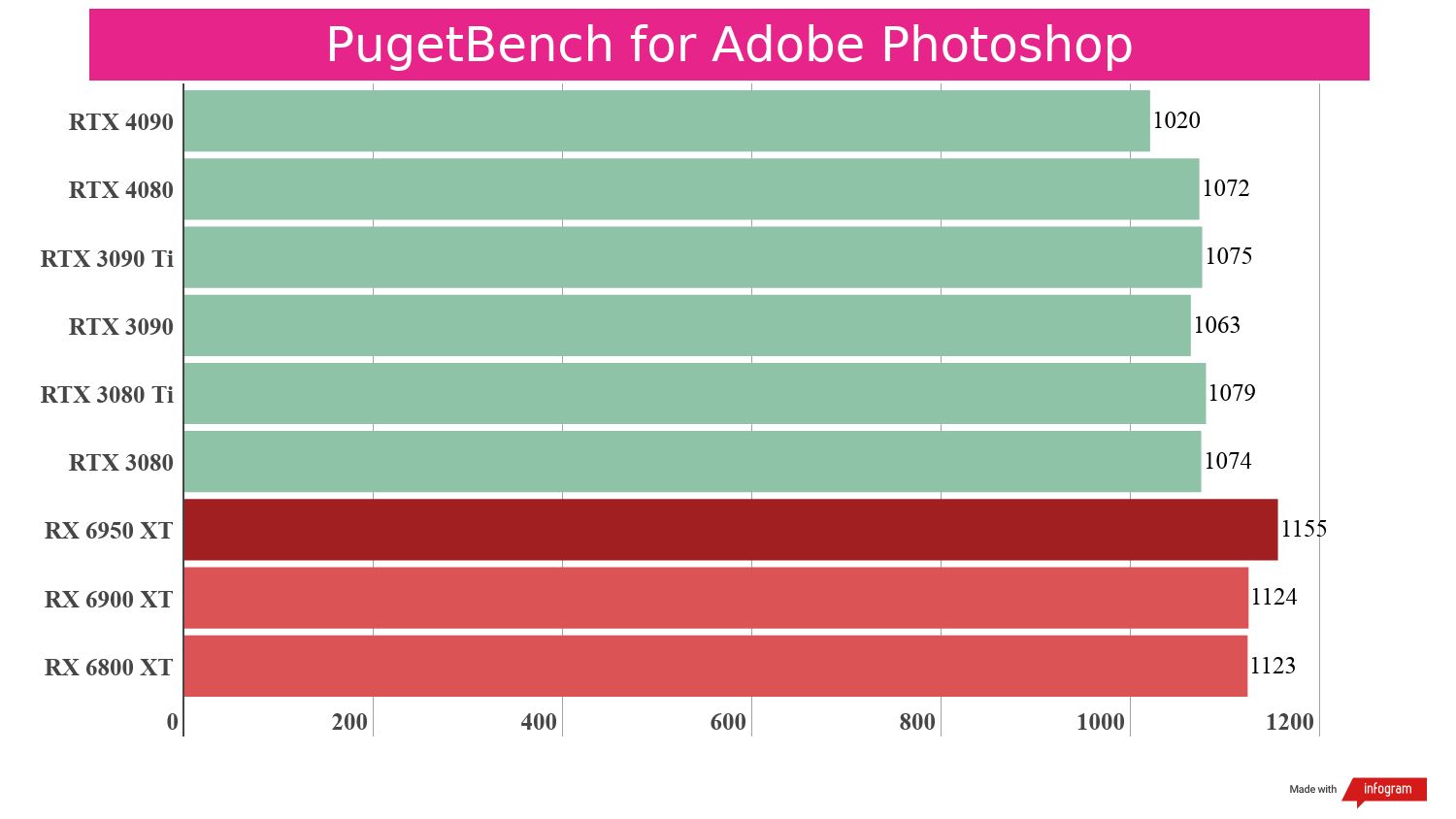
Even more interestingly, the RTX 4080 actually scored slightly higher than the RTX 4090 in the PugetBench benchmark for Adobe Photoshop – arguably the best photo editing software photographers can use.
The Ada edge?
Ada-series GPUs don’t just build upon the features found in previous consumer GPU architecture, such as Ampere and Turing, but also take elements of Nvidia’s enterprise-class Hopper GPUs, particularly with the 4th generation Tensor Cores, which feature Hopper’s FP8 Transformer Engine.
So, what’s behind the big leap in creative performance for the RTX 4080 compared to the RTX 3080 Ti? The RTX 4080, like the 4090, is built on Nvidia’s new Ada Lovelace architecture which adds new features that help boost creative tasks.
There’s an improved eight-generation encoder, including AV1 and AI live streaming for content creators. We had a play around, and while results will vary depending on your own and your viewers' internet connections, live streaming quality was impressive. The extra gaming chops of the RTX 4080 certainly help in this regard, ensuring gameplay is smooth and responsive.
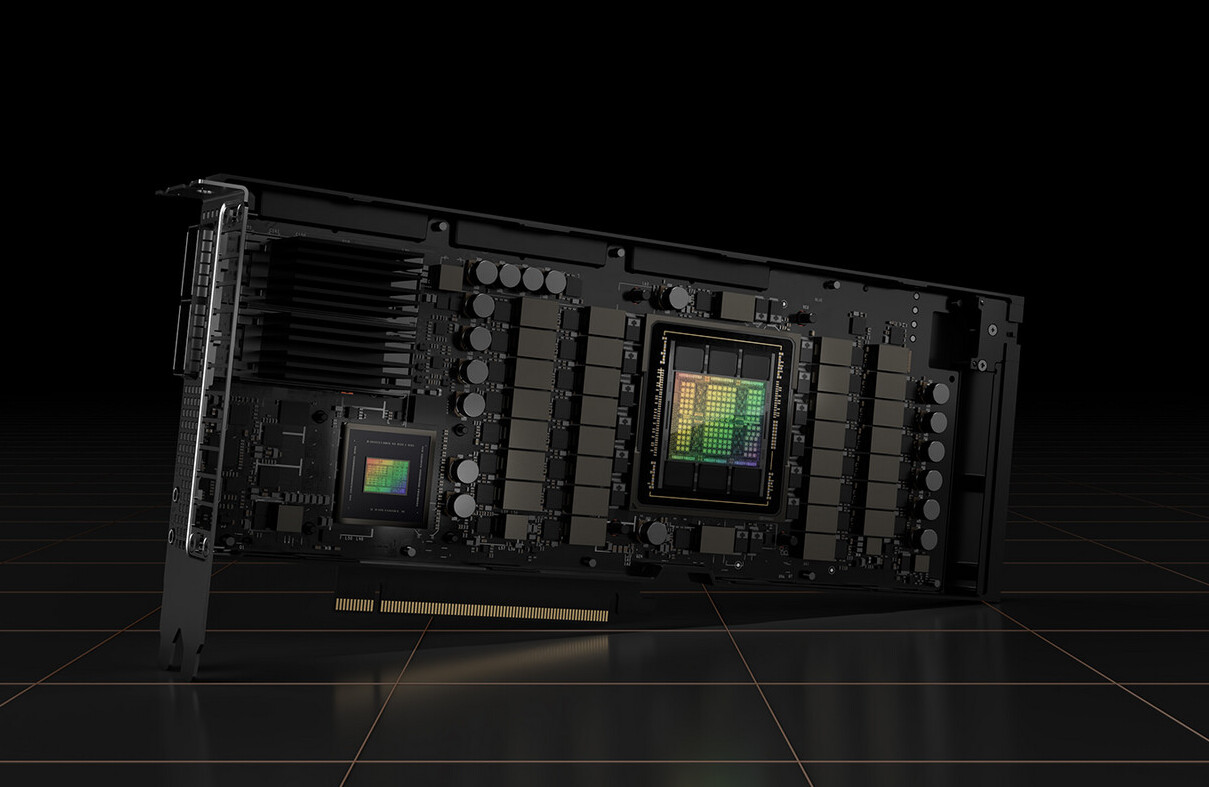
Jargon aside, the exciting implication is that you’re getting the kind of features you’d expect in an enterprise GPU in a far cheaper consumer GPU.
The RTX 4080 also comes with two video encoders that support the AV1 video codec, and Nvidia claims it’s 40% more efficient than the H.264 encoder that the previous Ampere generation used.
With dual video encoders, video rendering can be up to twice as fast as previous generation GPUs. For professionals this could have big, positive, repercussions – the faster your work renders, the more projects and commissions you can take on.
As with previous GPUs, Nvidia has also released Studio drivers that have been specially designed for creative applications (rather than its ‘Game Ready’ drivers, which focus on gaming performance). New features such as RTX Remix allow modders to add ray tracing effects to older games. It’s tools like this that really impress us.
Modding games takes a huge amount of effort and creativity, but it’s often dismissed as ‘just’ a hobby for hardcore fans – so it’s good to see Nvidia giving modders the respect they’re due.
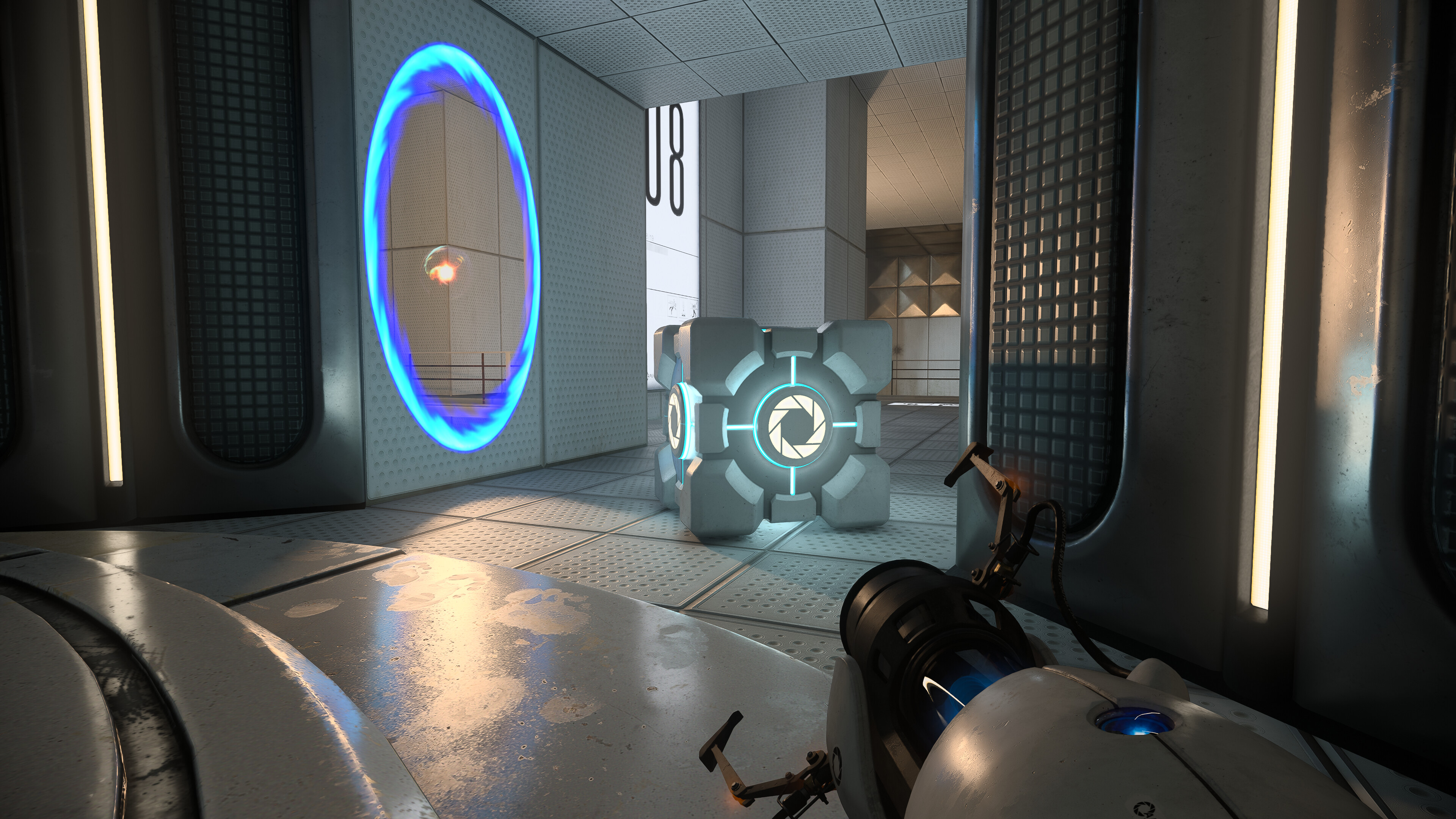
Verdict
As we noted in our main review of the RTX 4080, the GPU struggles to justify its price tag for gamers due to its high price tag which puts it out of the reach of mainstream users, even those who would have splashed out on the RTX 3080, while also coming enticingly close to the price of the RTX 4090 – which means enthusiasts may skip the 4080 and go for the much more powerful GPU.
When it comes to creatives, however, the RTX 4080 is a much more competitive proposition. It offers a big leap in performance over more expensive previous-generation GPUs in creative workloads, and includes features found in enterprise-grade GPUs – and while the 4080 is certainly expensive for a gaming GPU, when you compare it to professional GPUs, it offers far better value for money.
As our own tests showed, the gap between the 4080 and 4090 isn’t as pronounced with creative workloads as it is with gaming. Don’t get us wrong, the 4090 is a beast when powering through creative tasks, but the 24GB VRAM – arguably the biggest difference between the RTX 4090 and RTX 4080 (which has 16GB) – could be overkill for all but the most intense creative workloads (such as rendering extremely high-resolution 3D graphics).
If that’s the case, then the RTX 4080 will be much better value. As a gaming GPU, the RTX 4080 struggles to make a case for itself when it comes to value for money. As a creative GPU, it’s a much more compelling buy, with the advanced and improved features of the Ada Lovelace architecture making a noticeable difference when using creative apps.

Matt is TechRadar's Managing Editor for Core Tech, looking after computing and mobile technology. Having written for a number of publications such as PC Plus, PC Format, T3 and Linux Format, there's no aspect of technology that Matt isn't passionate about, especially computing and PC gaming. He’s personally reviewed and used most of the laptops in our best laptops guide - and since joining TechRadar in 2014, he's reviewed over 250 laptops and computing accessories personally.